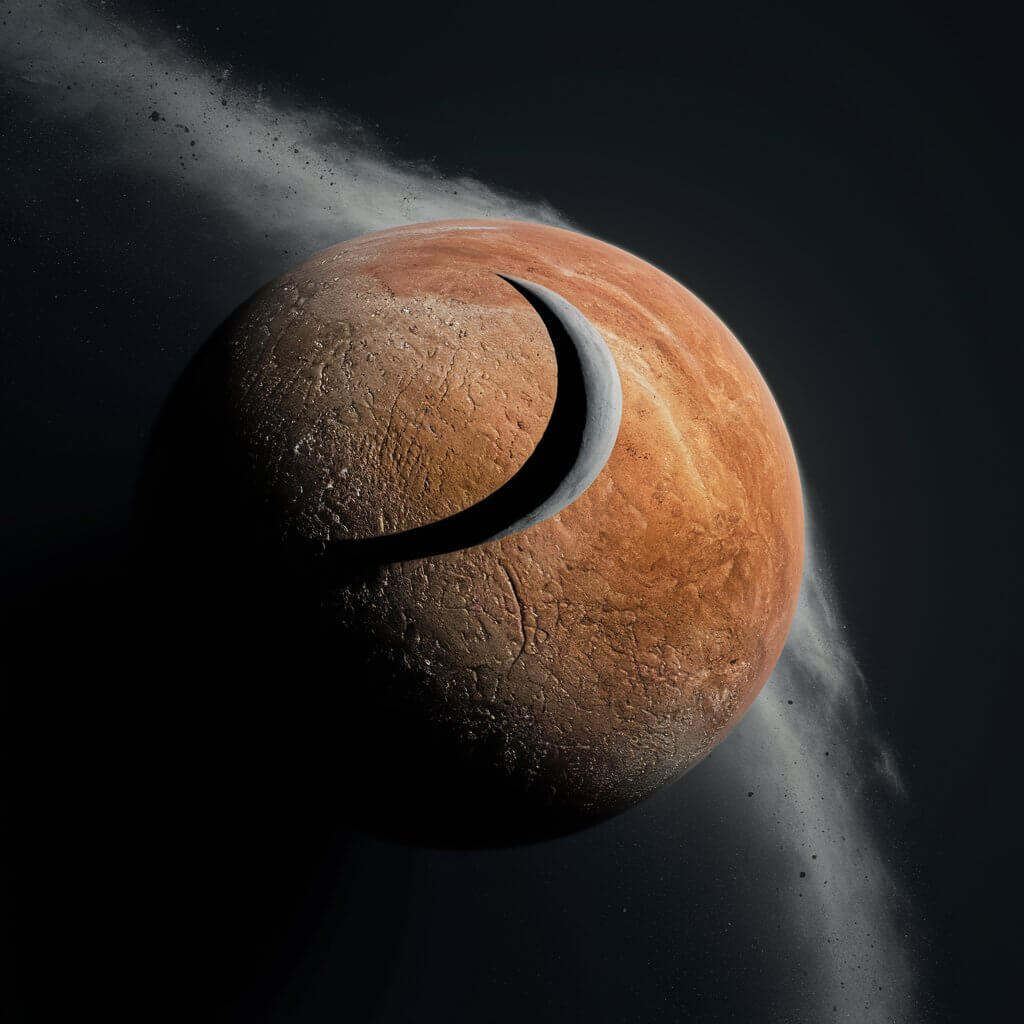IIf one starts to imagine planetary orbits, they will mostly remember the geometric figure of a circle. However, this is the simple form and representation of the celestial paths, as real paths are quite complicated and diverse. Actually, planetary orbits are oval-shaped, which Kepler, an astronomer, discovered in the early 17th century. Of the planets in the Solar System, some are more oval-shaped than others or, in other words, have greater eccentricities. Mercury’s orbit looks the least like a circle, being the most elliptical among all the planets. This article will explore which planet is the most elliptical and look at the reasons and behaviors of these oddities.

Understanding Orbital Eccentricity
In order to understand what will now be described in detail, it is necessary to have at least a rough idea what orbital eccentricity actually means. In other astronomical terms, there is what is known as eccentricity, which gives a measure of how far the orbit is from a circular orbit. It varies from 0 to 1; its value 0 means a perfect circle, while the value close to 1 corresponds to extremely elongated ellipses.
Kepler’s laws of planetary motion define such elliptic orbits along with the differences between them in regard to various objects of the universe. To quantify eccentricity, scientists use the formula:To quantify eccentricity, scientists use the formula:
Eccentricity is closer to 1 if the orbit is really elongated in comparison with the circular one. This characteristic goes beyond the aesthetic that is attached to an orbit but determines the dynamics of a planet’s motion in its path around the Sun.
Orbits of the Planets in Our Solar System
In Solar System companions are orbiting in ellipses, though the amount of eccentricity of these orbits is different. Now compare orbits of each planet and try to determine in which of the cases the orbit is in some way different from the rest of the orbits.
Mercury:
Mercury, the smallest and innermost planet in the Solar System, is known for its highly eccentric orbit. With an eccentricity of about 0.2056, its orbit is far from circular. This means Mercury’s path around the Sun is noticeably elliptical. Unlike most planets, whose orbits are nearly circular, Mercury’s orbit deviates significantly. At its closest approach, called perihelion, Mercury is approximately 46 million kilometers (29 million miles) from the Sun. At its farthest point, known as aphelion, it is around 70 million kilometers (43 million miles) away. This variation in distance results in significant differences in solar radiation received. The high eccentricity of Mercury’s orbit affects its surface temperatures and climate. Understanding Mercury’s orbit helps in studying its extreme temperature variations. The planet’s elliptical path is a key feature distinguishing it from other planets in the Solar System.
Venus:
Venus has a moderate eccentricity of something like 0. 0068, this a very small value, therefore the orbit is very close to being circular in nature. This is small variation that enters to the fact that this celestial body keeps a nearly constant distance of the Sun during its revolution.
Earth:
The celestial body earth has an orbital eccentricity of roughly about 0. 0167. This means that Earth’s orbit is not however perfectly circular. But the deviation from a circular form is not very extreme compared to orbits that are considerably more elliptical.
Mars:
In terms of eccentricity Mars orbit is slightly more elliptical than that of the Earth and it has the value of about 0. 0934. This causes the position of the planet with regards to distance from the Sun to have a noticeable difference when compared to the other planets of its orbital period.
Jupiter:
In particular, the position of the Earth in the Solar System, which has an eccentricity of about 0 for the Jupiter. 0489. Like all the gaseous giants, this planet has an oval shaped orbit that is not as stretched as that of the terrestrial ones but is by no means a circle.
Saturn:
The eccentricity of Saturn is about 0. 0565. This is somewhat more oval than in the case of Jupiter but still rather close to being circular.
Uranus:
Its eccentricity comes to about 0. [0022] 0463, which puts its orbit slightly closer to being a perfect circle than Saturn’s orbit is.
Neptune:
Eccentricity of Neptune is approximately 0. , the mean value of the eccentricity is only 0097, the lowest among the major planets and hence almost circular.
Pluto:
The last of the original nine major planets is Pluto whose orbit we’ll take a look at despite the fact that it is no longer being considered a major planet but it does have a highly eccentric orbit. It was noted that it has an eccentricity of about 0. 248 larger than the ones of the major planets, therefore we can derive that it is more elongated.
That is why Mercury becomes the most eccentric of the planets completing one orbit in 88 days.
A peculiar case belongs to Mercury which has the most eccentric orbit of all the planets in the Solar System. This significant eccentricity can be attributed to several factors:This significant eccentricity can be attributed to several factors:

Gravitational Influences:
Since Mercury is the closest planet to the Sun, it is attacked by very high levels of gravitation forces. These forces also add up, from the planets’ gravitational tugs, most especially from the giant Jupiter, to the elongation of the orbit.
Relativistic Effects:
Einstein’s theory of General Relativity proposed the fact that Mercury’s trajectory slightly altered by the bending of spacetime around the sun. This phenomenon called precession of the orbit changes the shape of Mercury’s orbit slightly and contributes to its effectively eccentric orbit.
Historical Dynamics:
The planetary orbits are not fixed; they have their own characteristics or dynamics of movements. In this case, it implies that over millions of years, new forces such as gravitational ones, might change the shape of an orbit. Perhaps, for Mercury, which has a high value of eccentricity, the indicated changes in the configuration of the Solar System in the past marked such solutions.
The Effect that Eccentricity Has on the Climate of Mercury
Due to the values of the eccentricity of the orbit of Mercury, big changes of climate and conditions of the surface of the planet are observed. Because the distance between Mercury and the Sun changes so drastically:Because the distance between Mercury and the Sun changes so drastically:
Temperature Variations: Temperature differences are apparent on the surface, with the variation being caused by the difference in distance from the sun. During the period of perihelion, it is pretty hot, amounting to roughly 430°C (800°F), but during aphelion, it is extremely cold, at a temperature not more than -180°C (-290°F). The extreme difference in temperature is as a result of the elliptical orbit of the said planet.
Solar Heating: The level of heating depends on the distance that separates Mercury from the star, the Sun. This is as a result of the solar heating at the nearest point, while at the farthest end, the heating is relatively low, thus implying a colder planet.
Orbital Dynamics: This means that its eccentricity leaves a significant imprint on the manner in which Mercury deals with other objects or the Sun’s gravity. It can affect its orbit and rotation period, that spans long years on Earth or even centuries.
Conclusion
All planets in the Solar System orbit in ellipses, but Mercury’s orbit is the most pronounced. Its eccentricity is about 0.2056, making its orbit significantly more elongated than those of other planets. Most planets have orbits that are nearly circular in comparison. This high eccentricity causes substantial variations in Mercury’s distance from the Sun. As a result, Mercury experiences extreme fluctuations in temperature. These variations have significant implications for the planet’s climate. Understanding Mercury’s orbit helps illustrate the effects of orbital eccentricity on planetary conditions.
The elliptical nature of planetary orbits provides valuable insights into the behavior of our Solar System. It reveals how gravitational forces and mechanical dynamics shape planetary motions. Mercury’s complex orbit illustrates these principles vividly. Its significant eccentricity affects not only its path but also its climate. The variations in distance from the Sun lead to extreme temperature changes on Mercury. Understanding these orbital characteristics helps us grasp how gravitational and mechanical forces influence planetary environments. Studying such orbits enhances our knowledge of solar system dynamics. Ultimately, these insights improve our comprehension of the conditions that affect planetary climates.
Read my latest blog from my site viewallonce thanks




